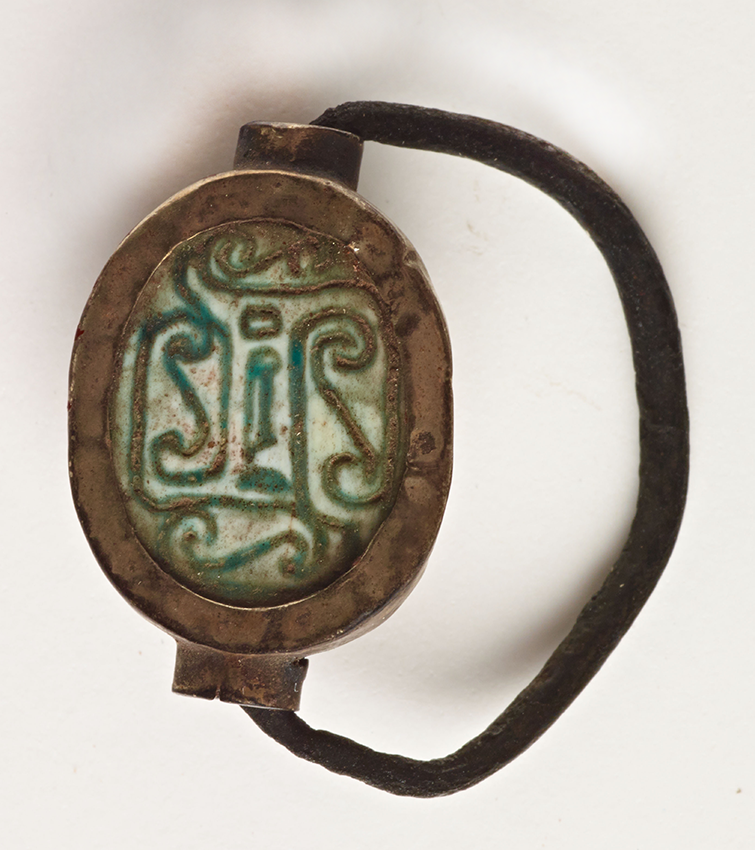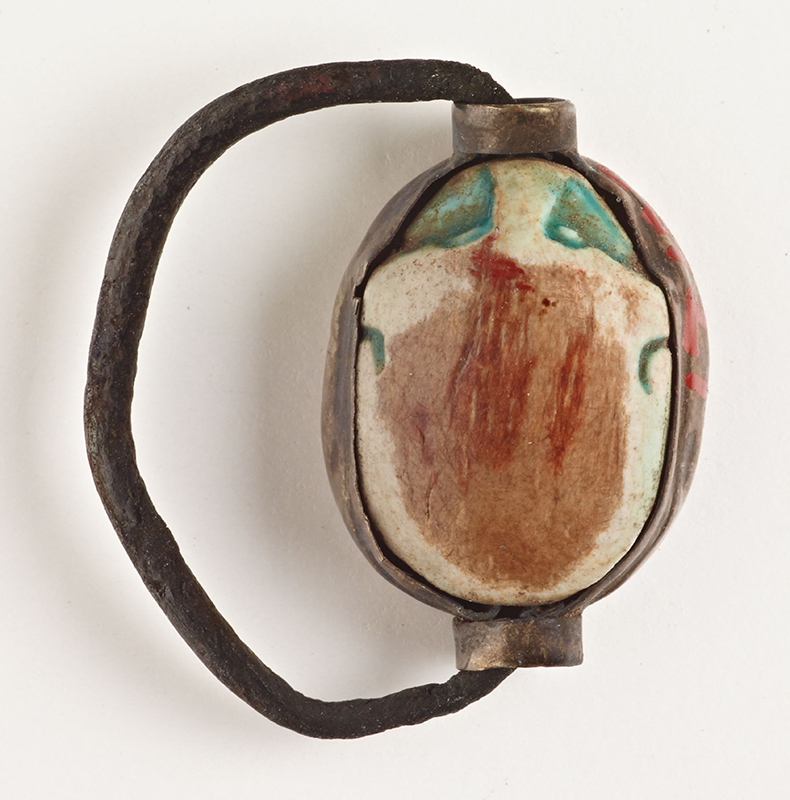Cantor Arts Center
328 Lomita Drive at Museum Way
Stanford, CA 94305-5060
Phone: 650-723-4177

Artist unknown (Egypt), Scarab Attached to a Ring, nd. Metal and Egyptian faience or glazed stone. Stanford Family Collections, JLS.171812
In 1884, while in Paris, Leland Stanford Jr. purchased a ring in the shape of a scarab. His biographer, Herbert C. Nash, described the antiquities markets where the boy likely found it:
It became known, too, that, though young and eager to buy, [Leland] could distinguish the real from the spurious almost as easily as the dealers themselves. . . . It frequently happened that in looking over specimens offered him for sale, Leland would hand some back to the dealer, quietly remarking that they were imitations, and invariably the man, after a look at his young customer, would apologize, excusing himself on the ground that the imitations had accidentally slipped in with the others.
Leland understood that antiquities dealers often peddled fake artifacts. So he took the scarab to his Egyptology tutor, Georges Daressy, who claimed that the piece bore the name of “‘Ra-Ma-Neb,’ which was the name of Amenhotep IV, 10th King of the 17th Dynasty.” Daressy was almost certainly deceiving the boy.
The ring does not mention “Ra-Ma Neb,” but reads “p Maat” ( ). Although Maat was a real Egyptian goddess, and the scarab’s flowing, scroll-like design recalls actual ancient patterns from 2050–1550 BCE, the inscription is grammatically nonsensical. The scarab might be a genuine antiquity that preserves a scribal error, a possibility that is not without precedent. Or it might simply be a fake. How should we regard objects whose authenticity we do not – or cannot – determine?
). Although Maat was a real Egyptian goddess, and the scarab’s flowing, scroll-like design recalls actual ancient patterns from 2050–1550 BCE, the inscription is grammatically nonsensical. The scarab might be a genuine antiquity that preserves a scribal error, a possibility that is not without precedent. Or it might simply be a fake. How should we regard objects whose authenticity we do not – or cannot – determine?
